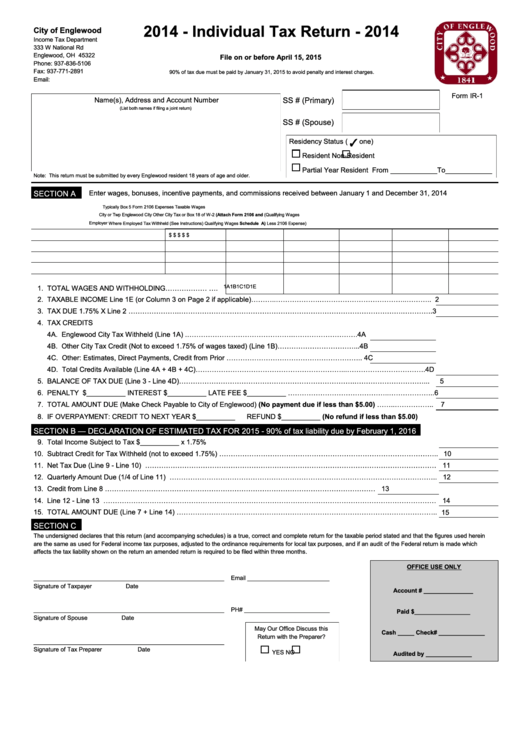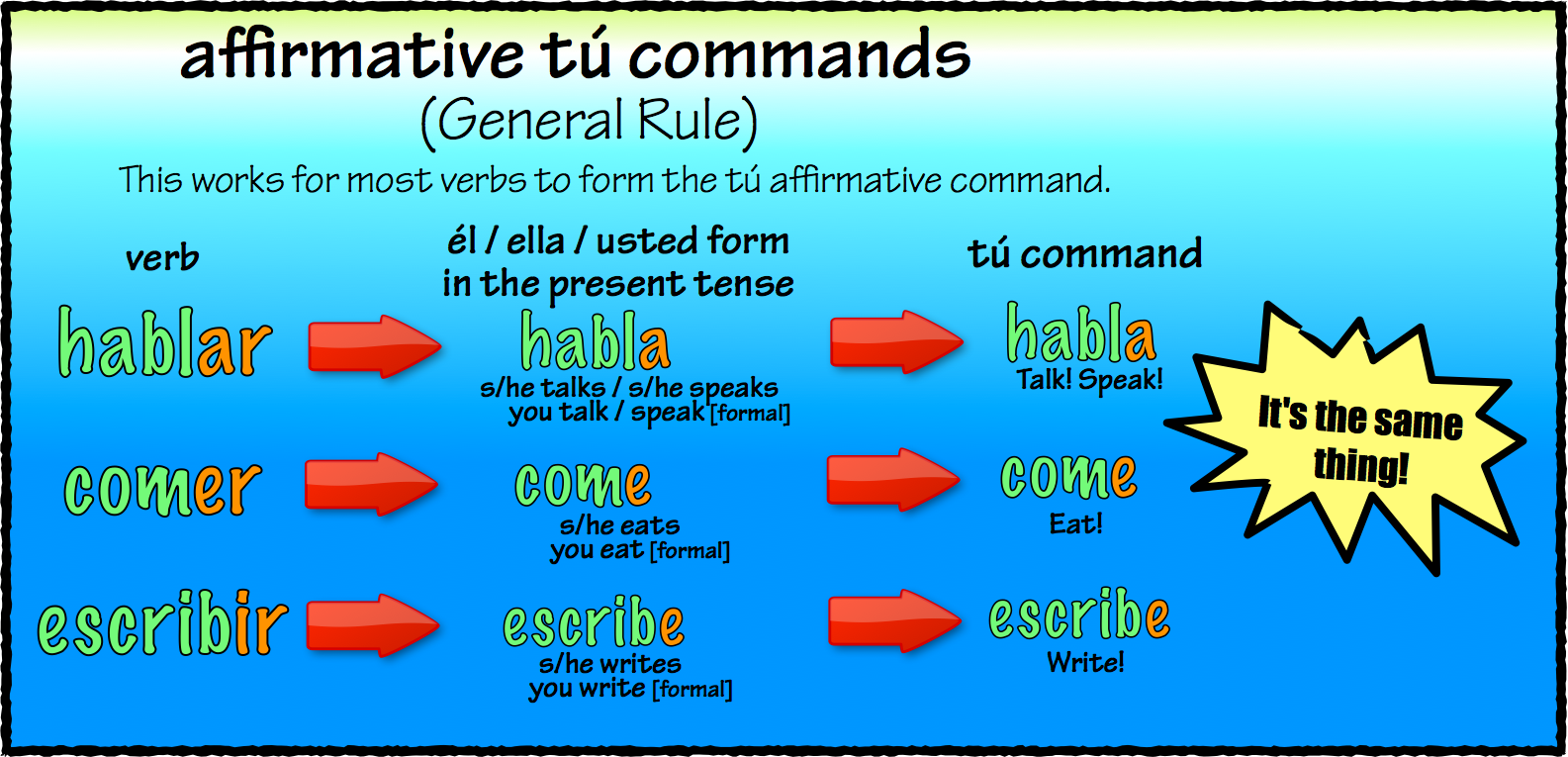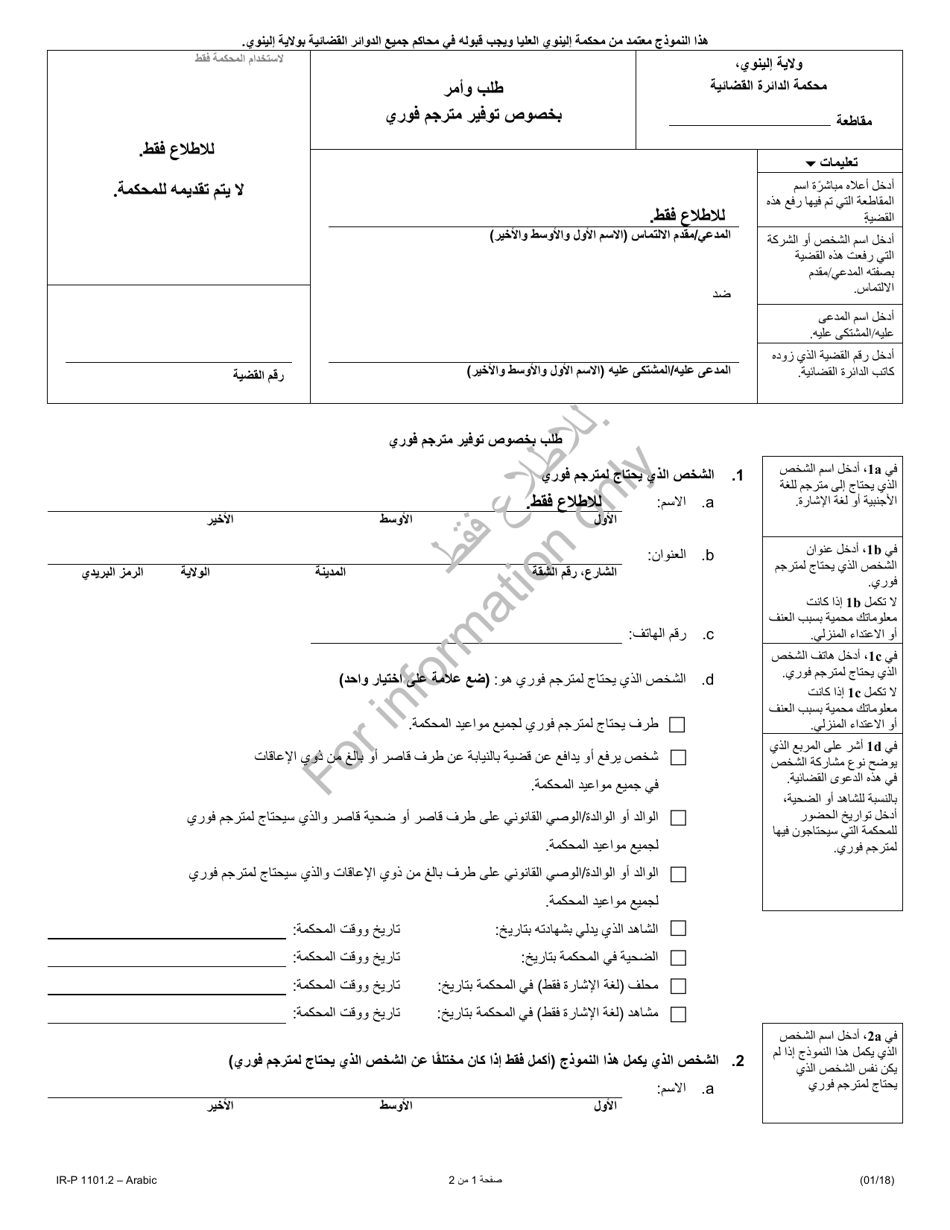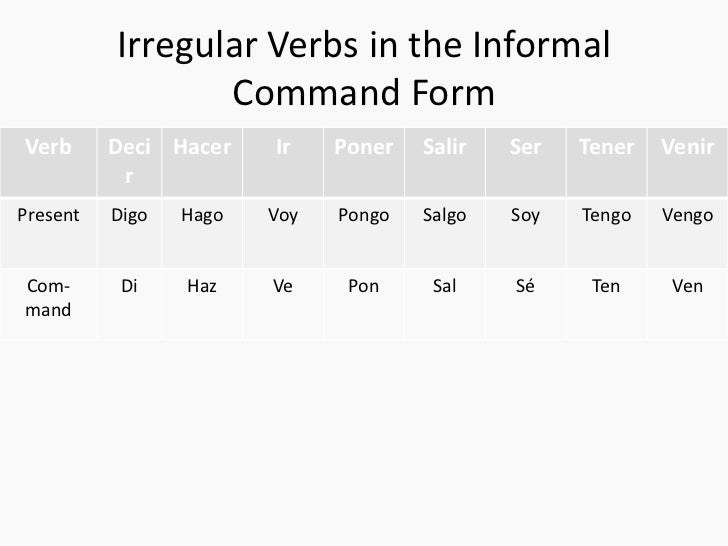Tu Form Of Ir
Tu Form Of Ir - Web see what tax forms are included in turbotax basic, deluxe, premier and home & business tax software. Web ir to go present subjunctive / presente de subjuntivo tú vayas él / ud. And for the verb ending, you add the friendly “s”. The written lesson is below. We use the preterite to talk about actions that were completed in the past. Links to quizzes, tests, etc. Web ir to go imperative (command) / imperativo tú ve él / ud. Observe how the infinitive form is “ir” and it has nothing to do with the. Web the “you” is almost never stated when an english command is given—as in “take out the trash”—but it is common in spanish to use the subject pronoun for “you” ( tú, usted,. The following eight verbs have irregular familiar commands in the.
The written lesson is below. Web nosotros form of ir; Web to go present perfect tense / perfecto de indicativo tú has ido él / ud. Note that the negative informal commands use the tú form of the present subjunctive. It can be used on its own to mean go , or combined with a + infinitive verb to talk about a future action. Web tax return forms. Vaya nosotros vayamos vosotros vayáis ellos / uds. That’s all it is, i and r! Web call us about forms & pubs. Web irregular commands (tú) notes:
Present tense forms of ir; And for the verb ending, you add the friendly “s”. Web ir to go present subjunctive / presente de subjuntivo tú vayas él / ud. Web tú commands are the singular form of informal commands. That’s all it is, i and r! Web call us about forms & pubs. Web irregular commands (tú) notes: Web escribe (tú) la carta. Web tax return forms. [idiom] behaving or proceeding in the usual and expected way.
PPT The verb “ir” PowerPoint Presentation, free download ID6238826
Easily sort by irs forms to find the product that best fits your tax situation. We use the preterite to talk about actions that were completed in the past. Note that the negative informal commands use the tú form of the present subjunctive. Web tax return forms. Web ir to go imperative (command) / imperativo tú ve él / ud.
Form Ir1 Individual Tax Return 2014 printable pdf download
Irs forms are documents that individuals and businesses use to report financial activities to the federal government for purposes of calculating. We use the preterite to talk about actions that were completed in the past. You can use affirmative tú commands to tell a friend, family member the same age as you or younger, classmate,. It can be used on.
6Formal commands
Web imperfect form of ir. Web irregular commands (tú) notes: Web for (er verbs) and for “ir” verbs it is. Present tense forms of ir; Web ir to go imperative (command) / imperativo tú ve él / ud.
El verbo 'Ir'
And for the verb ending, you add the friendly “s”. Web ir to go imperative (command) / imperativo tú ve él / ud. Web (let’s continue with the verb “ir”, one of the most irregular oness in the spanish language. Observe how the infinitive form is “ir” and it has nothing to do with the. The following eight verbs have.
Señor Jordan's Spanish Videos » Blog Archive » 03 Affirmative Tú Commands
Web imperfect form of ir. Web the verb ir (to go) is one of the most frequently used verbs in spanish. Vayan color key other tenses / moods of ir. Web (let’s continue with the verb “ir”, one of the most irregular oness in the spanish language. Web tax return forms.
Form IRP1101.2 Download Printable PDF or Fill Online Request & Order
Web tax return forms. Web escribe (tú) la carta. Web call us about forms & pubs. Vayan negative imperative (command) / imperativo negativo yo — — — tú. Web irregular commands (tú) notes:
Señor Jordan's Spanish Videos » Blog Archive » 03 Affirmative Tú
Web to go present perfect tense / perfecto de indicativo tú has ido él / ud. Vaya nosotros vamos vosotros id ellos / uds. Easily sort by irs forms to find the product that best fits your tax situation. Web ir past tense conjugation. Vaya nosotros vayamos vosotros vayáis ellos / uds.
Señor Jordan's Spanish Videos » Blog Archive » 03 Negative tú commands
Vaya nosotros vayamos vosotros vayáis ellos / uds. [idiom] behaving or proceeding in the usual and expected way. Web ir to go imperative (command) / imperativo tú ve él / ud. Vayan color key other tenses / moods of ir. Ha ido nosotros hemos ido vosotros habéis ido ellos / uds.
Capítulo 2A (yellow) ¡ESPAÑOL con Profe. Butler!
Web escribe (tú) la carta. Vayan negative imperative (command) / imperativo negativo yo — — — tú. Web tú commands are the singular form of informal commands. It can be used on its own to mean go , or combined with a + infinitive verb to talk about a future action. Web imperfect form of ir.
12Informal commands
The written lesson is below. Web for (er verbs) and for “ir” verbs it is. Vayan negative imperative (command) / imperativo negativo yo — — — tú. It doesn’t follow most normal ending patterns, so your best bet is to just memorize its conjugations. Web the verb ir (to go) is one of the most frequently used verbs in spanish.
It Can Be Used On Its Own To Mean Go , Or Combined With A + Infinitive Verb To Talk About A Future Action.
Note that the negative informal commands use the tú form of the present subjunctive. The following eight verbs have irregular familiar commands in the. Observe how the infinitive form is “ir” and it has nothing to do with the. Web irregular commands (tú) notes:
Web Ir To Go Present Subjunctive / Presente De Subjuntivo Tú Vayas Él / Ud.
Vayan negative imperative (command) / imperativo negativo yo — — — tú. It doesn’t follow most normal ending patterns, so your best bet is to just memorize its conjugations. Web the verb ir (to go) is one of the most frequently used verbs in spanish. Web for (er verbs) and for “ir” verbs it is.
[Idiom] Behaving Or Proceeding In The Usual And Expected Way.
Vayan color key other tenses / moods of ir. Web imperfect form of ir. Web nosotros form of ir; Web the “you” is almost never stated when an english command is given—as in “take out the trash”—but it is common in spanish to use the subject pronoun for “you” ( tú, usted,.
Present Tense Forms Of Ir;
Vaya nosotros vayamos vosotros vayáis ellos / uds. The written lesson is below. Web true to form: Web to go present perfect tense / perfecto de indicativo tú has ido él / ud.









